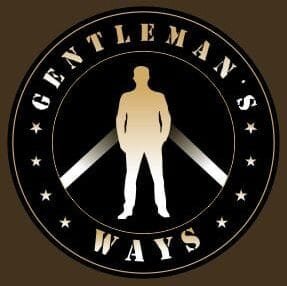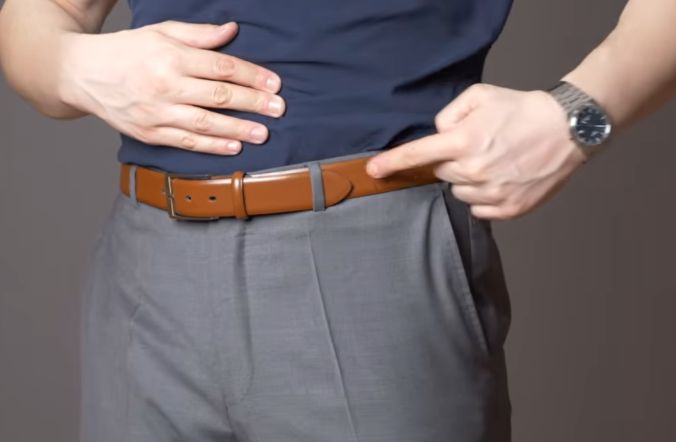Last updated on November 17th, 2025 at 03:30 pm
Men’s belts choices speak volumes about personal style. This guide walks you through selecting the right type, matching it with outfits, and keeping it sharp for every occasion.
When you choose a belt, you are doing more than securing your trousers. You are adding a touch that shapes how people see your style and fashion, and attention to detail.
Men’s belts can define an outfit, whether you are dressing for work, a casual outing, or a formal event.
The type of material, from leather to canvas, and the choice of buckle can change the impression you give without saying a word.
Knowing how to select the right belt for your outfit, body shape, and occasion can make you look and feel complete and intentional.
This guide will walk you through the styles, fittings, and materials for men’s belts, helping you understand how to pair them with various outfits.
By paying attention to these details, you can strengthen your style and present yourself with confidence.
Table of Contents
- What Are Men’s Belts?
- History and Evolution of Men’s Belts
- The Roles of Men’s Belts
- Types of Men’s Belts
- Materials for Men’s Belts
- How to Choose the Right Belt Size and Fit for Men
- Belt Colors and Matching Rules
- How to Wear a Men’s Belt for Different Occasions
- Buckles and Belt Hardware: Belt Buckle Styles
- Men’s Belt Maintenance and Storage
- Common Mistakes Men Make with Belts
- Frequently Asked Questions
What Are Men’s Belts?
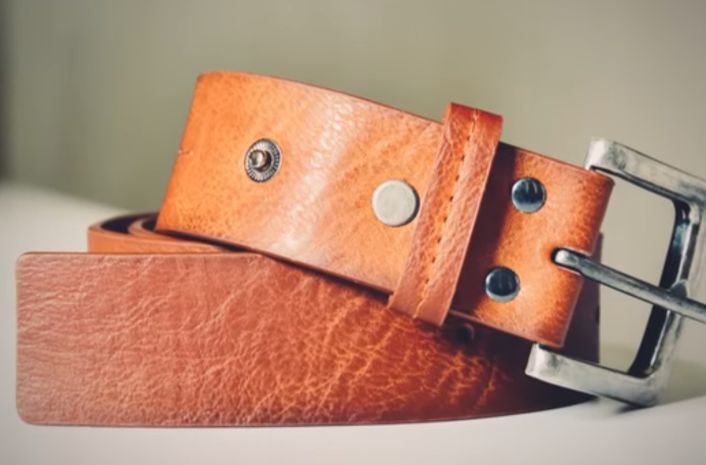
Men’s belts are one of men’s functional and stylish fashion accessories worn around the waist to hold up trousers or pants while adding structure and definition to an outfit.
Beyond their practical role, belts serve as subtle style statements that reflect personal taste, attention to detail, and a refined sense of fashion.
They come in various materials, including leather, canvas, and synthetic fabrics, and feature different buckle designs, each suited for specific occasions such as formal events, casual outings, or business settings.
A well-chosen men’s belt complements shoes, clothing, and overall attire, enhancing the look without drawing unnecessary attention.
Understanding belt styles, materials, and fitting ensures that men can combine practicality with style, making belts an integral part of a polished and intentional wardrobe.
Recommended: Men’s Footwear Guide
History and Evolution of Men’s Belts
Belts have shaped men’s fashion for centuries. They tell a story of function, style, and social status, showing how clothing adapts to practical needs and personal expression.
Origins of Belts in Men’s Fashion
Belts began as practical tools to keep clothing secure. Early men used leather straps, cords, or cloth sashes to hold tunics, trousers, and armor in place.
Over time, belts evolved into indicators of social rank, profession, or wealth.
Nobles often wore decorated belts with metal buckles or embroidery, while commoners used simple leather bands.
Understanding these origins helps you see how an accessory started purely for function but became part of men’s identity.
Today, wearing a belt connects you to centuries of tradition while providing practical support for modern outfits.
How Belt Styles Have Changed Over Time
Belt styles shifted with changing fashion, materials, and cultural trends. Widths, buckle designs, and leather finishes are adapted to both formal and casual wear.
Buckles became decorative, with engraved metal, brass, or silver styles marking status or taste.
Colored leathers and stitched edges allowed men to express personality while staying practical.
Today, casual belts, formal belts, braided designs, and reversible options give you variety for every outfit.
Recognizing this evolution can guide you when picking belts for work, social events, or daily wear, letting your accessory match the look and feel you want to project.
The Belt as Both a Functional and Style Accessory
Belts serve two roles: holding pants and defining your style. Choosing the right belt width, color, and buckle can transform an outfit.
Leather belts offer elegance, while fabric or braided designs add casual flair. You can match your belt with shoes, watches, or jackets to create balance and cohesion.
Knowing how to wear belts strategically helps you enhance proportions and draw attention to your overall style.
Every belt you choose sends a message about taste and personality, making it a small but powerful tool in shaping how others perceive you.
Related Posts
Corporate Fashion for Older Men
Chinos Men’s Outfits: Types, Styling and Accessories
Men’s Blazers: Types By, Design, Fit, Fabric, and Occasion
Guide to Men’s Watches: Styles, Movements and More
The Roles of Men’s Belts
Functional Support
Belts keep trousers or pants in place, ensuring a comfortable and secure fit.
Men’s belts prevent sagging or slipping, particularly for dress pants, jeans, and casual trousers, allowing men to move freely while maintaining a neat appearance.
Style Definition
Men’s belts define the waistline and complete an outfit. By coordinating with clothing and accessories, belts subtly communicate personal style and attention to detail, making a look feel intentional and polished without overpowering the overall attire.
Symbol of Professionalism
In formal or business settings, belts signal professionalism and discipline.
A well-matched belt and shoes convey a sense of order and sophistication, enhancing first impressions during meetings, interviews, and events where appearance reflects credibility.
Expression of Personality
Belts allow men to showcase individuality through material, color, buckle design, and texture.
From classic leather to braided or patterned styles, the right choice communicates taste, lifestyle, and personal fashion preferences without needing words.
Versatility Across Outfits
Men’s belts adapt to different occasions, from casual to formal. Choosing the right belt for pants, jeans, or suits allows a man to transition seamlessly between settings while maintaining cohesion and a balanced, well-thought-out look.
Types of Men’s Belts
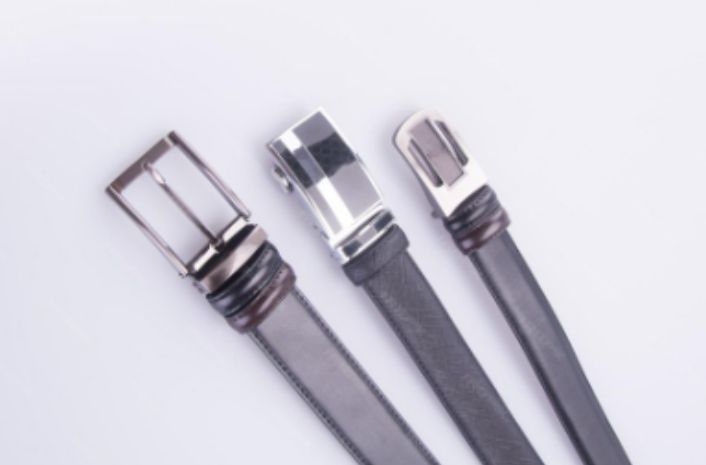
Belts do more than hold pants in place. They define style, match outfits, and reflect personality.
Knowing the different types helps you choose the right belt for formal events, casual wear, or travel, ensuring every outfit looks balanced and intentional.
Formal Belts
Formal men’s belts suit business attire or events where a polished appearance matters.
Crafted from high-quality leather, they feature simple, elegant buckles and smooth finishes that pair with dress shoes.
Black and brown are standard, giving options to match various suits.
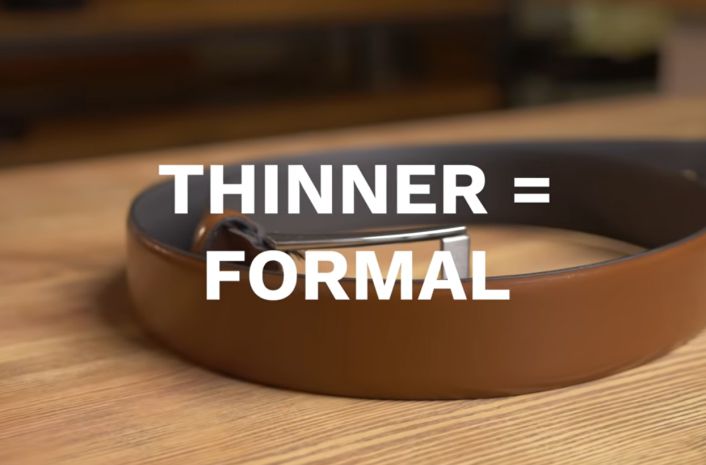
Wearing a formal belt requires attention to fit and coordination with your outfit, helping you present a refined, intentional look.
Matching your belt to shoes and outfit details creates a consistent style that enhances professionalism without drawing unnecessary attention.
Casual Belts
Casual belts are relaxed in style and material, often made from fabric, suede, or distressed leather.
They come in multiple colors and patterns, adding a playful or creative touch to jeans, chinos, or shorts.
Pairing a casual belt with shoes and other accessories ensures balance in your outfit.
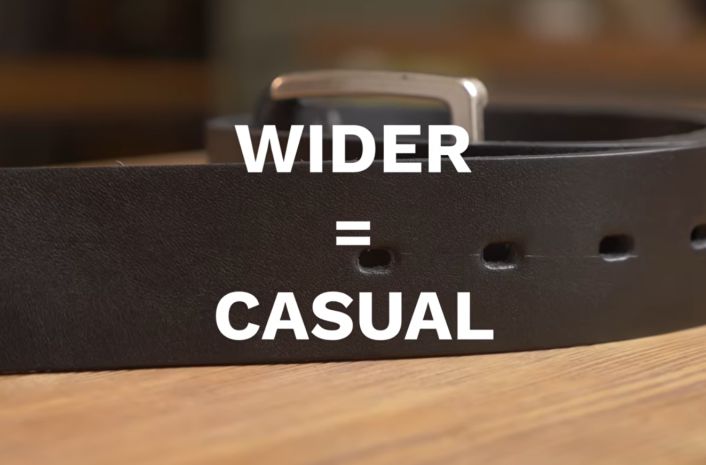
These belts give you freedom to experiment with looks, letting you project personality in everyday settings.
Whether you are running errands or meeting friends, a casual belt offers comfort, style, and versatility, helping you feel put-together without looking overdone.
Reversible Belts
Men’s reversible belts offer practicality and style flexibility with a dual-color design.
By flipping the belt, you can switch between two looks, making them perfect for travel or minimal packing.
Reversible belts exist in both formal and casual styles, giving options for various occasions.
To get the best effect, match the belt side with the corresponding shoes, keeping the outfit cohesive.
This simple adjustment allows you to maintain a consistent style while reducing clutter.
Reversible belts give you convenience, variety, and functionality without sacrificing appearance or sophistication, making them an efficient accessory for daily wear or trips.
Modern Ratchet Belts
Modern ratchet belts provide precision fit and comfort through a track system instead of traditional holes.
This design allows small adjustments for perfect sizing, eliminating gaps or tight spots.
Ratchet belts come in different materials and styles suitable for both casual and formal outfits.
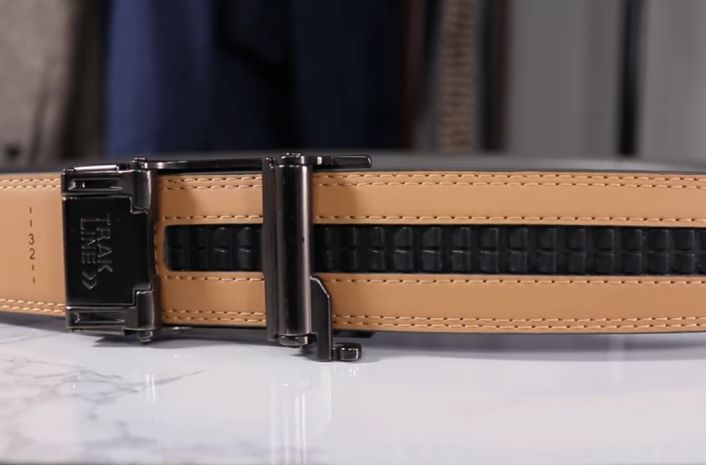
Their minimalist look complements dress pants or denim, adding a sleek, modern touch.
With durability and ease of use, these belts adapt to body changes or long days without losing shape.
Wearing a ratchet belt gives you a tailored feel, helping your outfit look neat while keeping practical convenience in mind.
Statement Belts
Statement belts are meant to draw attention and define an outfit. Bold colors, unique patterns, or decorative buckles transform simple clothing into style highlights.
These belts let you express personality and creativity, especially when paired with understated outfits.
Wearing a statement belt effectively requires balancing the rest of your look, like keeping clothing neutral to let the belt shine.
Monochrome outfits with a statement belt create focus and visual impact.
Statement belts turn your accessory into a conversation piece, giving your style a distinct edge and helping you stand out while maintaining coordination and overall harmony in your ensemble.
Materials for Men’s Belts
Belt materials shape both appearance and performance. Knowing which material works for different occasions helps you choose belts that last, look good, and match the style of your outfit.
Understanding leather, fabric, and synthetic options ensures your belt fits the purpose and enhances your look.
Leather Belts
Leather belts are classic, durable, and adaptable for formal or casual wear.
Full-grain leather comes from the top hide layer, keeping natural textures and marks, offering longevity and a rich, aged look.
Top-grain leather is more refined and uniform but may be slightly less durable.
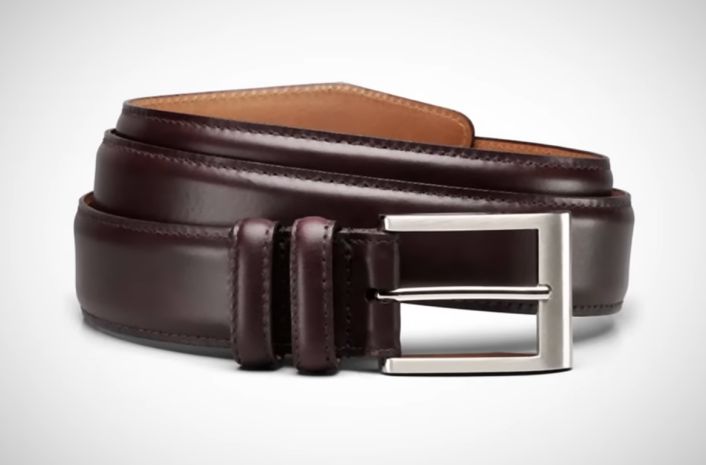
Leather belts pair well with dress shoes, chinos, or jeans, making them versatile staples. Caring for them with regular conditioning preserves their appearance.
Choosing leather allows you to invest in a belt that not only supports your outfit but also develops character with time, adding style and function.
Canvas Belts
Canvas belts are lightweight, flexible, and ideal for casual wear. Made from cotton or blended fabrics, they are breathable, comfortable, and perfect for warm weather.
Canvas belts often feature simple buckles or loops and come in a variety of colors and patterns, giving you room to experiment with style.
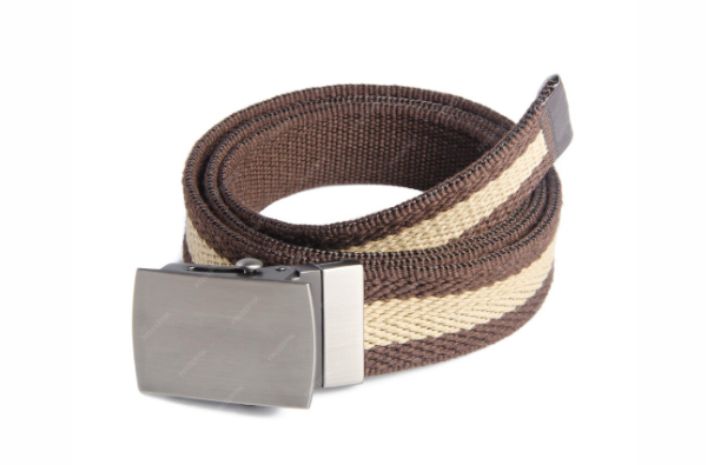
They pair well with shorts, jeans, or chinos, creating a relaxed yet intentional appearance.
Durable enough for everyday wear, canvas belts provide practicality without sacrificing comfort.
For men who favor a laid-back look, canvas belts are a dependable choice that balances ease, style, and adaptability.
Synthetic and Fabric Belts
Synthetic and fabric belts offer variety and affordability. These belts are often made from polyester, nylon, or faux leather, giving options in color, texture, and patterns.
They suit casual or functional outfits, like outdoor or travel wear, and are lighter than leather belts.
While they may not last as long, their easy maintenance and water-resistant qualities make them practical for daily use or active lifestyles.
Choosing synthetic belts allows you to coordinate colors and textures with clothing and shoes.
Understanding when to use them helps you maintain a cohesive look without overinvesting in every belt.
Braided Belts
Braided belts combine style, flexibility, and adjustability. Interwoven strands of leather, fabric, or synthetic material allow you to fit the belt precisely without relying on fixed holes.
This makes them perfect for varied waist sizes and layering over casual outfits.

Braided belts often have a relaxed, textured appearance that adds character to jeans, chinos, or shorts.
They also work for smart-casual looks when paired with suede shoes or jackets.
Investing in a braided belt gives you both function and aesthetic appeal, providing versatility that adapts to informal or semi-formal occasions with ease.
How to Choose the Right Belt Size and Fit for Men
A properly fitting belt adds comfort and style to your outfit.
Knowing how to measure, select width, and position your belt ensures it supports your clothing and complements your overall look without compromising ease or appearance.
Determining Belt Size
To choose the correct belt size, use the “pants size plus two” method. For example, if your waist is 34 inches, select a 36-inch belt.
This provides enough room for adjustment while ensuring a comfortable fit.
Proper sizing prevents the belt from feeling too tight or slipping, giving you both function and style.
Checking the fit at the middle hole allows flexibility for minor weight changes and layering over shirts or sweaters.
A well-sized belt enhances your appearance while keeping your outfit aligned and polished.
Choosing the Right Men’s Belt Width
Belt width affects both comfort and the overall aesthetic. Dress belts typically measure between 1.25 and 1.5 inches, pairing neatly with formal trousers and suits.
Casual belts are wider, ranging from 1.5 to 2 inches, adding a relaxed feel to jeans or chinos.
Narrow belts provide a refined, tailored appearance, while broader belts create a laid-back vibe.
Selecting the right width ensures balance with your outfit and proportions.
Considering the belt width about your clothing and shoes allows you to maintain style consistency and ensures the accessory complements your overall look.
Proper Men’s Belt Positioning
A belt should sit at your natural waistline, usually just above the hips.
Positioning it correctly ensures comfort and prevents bunching or sagging.
It should be snug without pressing into your body or leaving gaps.
For formal attire, match the belt color with the shoes and other accessories to maintain cohesion.
Correct placement contributes to a clean, polished look and avoids a sloppy appearance.
Adjusting your belt holes slightly can fine-tune the fit, making it comfortable throughout the day.
Proper positioning enhances both style and function, helping your outfit look intentional and well put-together.
Coordinating Belts with Style
Beyond fit, a belt should complement your outfit in color, material, and design.
Leather belts pair best with dress shoes, while canvas or braided belts suit casual settings.
Coordinating with other accessories, like watches or bags, creates a cohesive look.
Paying attention to details ensures your belt works as both a functional item and a style element.
The right belt ties your outfit together, giving you a refined and thoughtful appearance.
Selecting belts with matching tones and textures enhances professionalism or casual flair while showing attention to fashion and personal style.
Belt Colors and Matching Rules
Belt colors influence the balance and style of any outfit.
Knowing how to match belts with shoes, clothing, and accessories ensures your appearance looks intentional, polished, and harmonious, whether for formal events or casual occasions.
Matching Belts with Shoes
The simplest rule is to match your belt with your shoes. Black belts pair with black shoes, and brown belts work with brown footwear.
This creates a clean, coordinated appearance that maintains traditional style standards.
Matching belts and shoes ties an outfit together, reinforcing professionalism and attention to detail.
Even minor differences in leather shades can impact the overall look, so select colors that complement each other while maintaining a refined balance.
Experimenting with Contrasts
Contrasting belts can add interest to neutral outfits. A navy belt with brown shoes or a burgundy belt with beige trousers draws attention subtly while remaining stylish.
When using contrasting colors, maintain harmony across the outfit.
Accessories like watches, bags, or socks echoing the belt color can help unify the look.
Thoughtful contrasts can transform ordinary outfits into eye-catching ensembles, giving you room for personal expression without appearing mismatched.
Experimenting with contrast allows you to showcase creativity while keeping proportions and color balance intact.
Choosing Colors by Occasion
The setting dictates belt color choices. Formal occasions favor black, brown, or dark navy belts, providing a sophisticated, classic look.
Casual environments allow bolder options, such as olive, burgundy, or patterned belts, which can inject personality.
Denim or chinos pair well with vibrant belts, adding playful yet intentional touches.
Understanding the occasion ensures your belt enhances your outfit rather than clashing with it.
Selecting the right tone helps you maintain appropriateness while subtly reflecting style preferences, making your accessory a functional and fashionable element.
Harmonizing Accessories and Outfits
Beyond shoes, belts should coordinate with other accessories to complete the ensemble.
Watches, bags, and even subtle accents like cufflinks can echo the belt’s color, creating a polished and intentional appearance.
Paying attention to textures and finishes further strengthens cohesion.
A leather belt with matching leather shoes and bag gives a refined impression, while fabric belts can complement casual attire or playful patterns.
Properly harmonized belts elevate overall style, turning simple outfits into visually balanced looks that reflect both taste and attention to detail.
How to Wear a Men’s Belt for Different Occasions
Belts for men influence the balance and style of your outfit. Choosing the right belt for the occasion helps you look polished, confident, and intentional, whether in formal settings, casual environments, or while traveling.
Formal and Business Occasions
For formal events or business settings, leather belts for men in classic colors like black or brown are ideal.
Pair them with matching dress shoes for a clean, professional look.
A simple, understated buckle keeps the focus on your outfit rather than the accessory.
Formal belts add structure and sophistication, ensuring your attire appears intentional.
Choosing the right belt demonstrates attention to detail and helps maintain a polished appearance, giving you confidence in meetings, presentations, or events where professionalism matters most.
Business Casual Settings
Men’s belts for business casual allow subtle self-expression while staying professional.
Woven, textured, or patterned belts add visual interest without overpowering your outfit.
Pair them with chinos, dress shirts, or smart trousers to balance formality and approachability.
The belt can reflect your taste while aligning with workplace norms.
Choosing an accessory that complements colors and textures creates a cohesive outfit.
In these settings, belts bridge the gap between professional and relaxed, helping you project confidence, style awareness, and adaptability in environments where presentation and personality both matter.
Weekend Casual Outfits
Casual settings let you experiment with color, material, and style.
Fabric, canvas, or braided belts work well with shorts, jeans, or casual chinos.
Bright or patterned belts can complement neutral outfits, adding personality without overwhelming the look.
Choosing a belt that fits the color scheme ensures harmony and cohesion.
Casual belts for men provide comfort while maintaining style.
By selecting materials and tones suited to relaxed environments, you can effortlessly elevate everyday outfits, making casual attire feel intentional, cohesive, and expressive without sacrificing ease or comfort.
Men’s Travel and Versatile Belts
For travel, comfort and adaptability matter most. Men’s stretchy or reversible belts offer flexibility, allowing you to adjust fit or change color to suit multiple outfits.
Lightweight materials reduce bulk while maintaining style.
Travel belts can pair with both casual and slightly formal clothing, providing a consistent appearance throughout trips.
Choosing versatile belts minimizes packing needs while ensuring you remain presentable.
With thoughtful selection, travel belts deliver convenience, style, and comfort, making them practical for long flights, sightseeing, or work trips without compromising your overall look.
Buckles and Belt Hardware: Belt Buckle Styles
Belt buckles complete the look of any outfit. Choosing the right hardware affects both style and functionality, allowing your belt to complement casual, business, or formal wear while reflecting personal taste.
Classic Pin Buckle
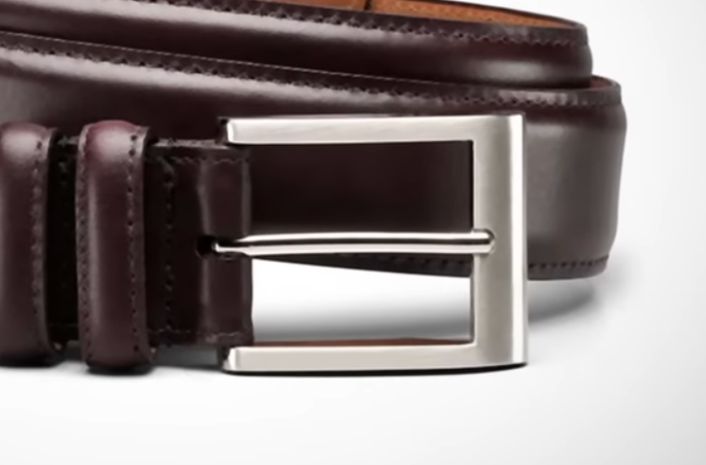
The classic pin buckle is the most familiar design, featuring a metal pin that slides into belt holes. Its simplicity makes it versatile for formal and casual belts alike.
A leather belt with a pin buckle pairs well with dress pants or jeans, creating a polished appearance.
The pin mechanism allows easy adjustment, offering comfort without sacrificing style.
Choosing a high-quality pin buckle ensures durability and smooth operation, making it a dependable choice for everyday wear.
Frame-Style Buckle
Frame-style buckles feature a rectangular frame that holds the belt securely.
Their clean, understated design makes them suitable for both casual and formal outfits.
Frame buckles often come in polished or brushed finishes, which can subtly influence the belt’s overall appearance.
This style balances functionality with elegance, allowing your belt to blend seamlessly with various wardrobe choices.
When paired with leather, fabric, or braided belts, frame buckles enhance cohesion while maintaining simplicity.
They provide a classic touch that supports both professional and relaxed looks without drawing excessive attention.
Box-Frame and Plate Buckles
Box-frame and plate buckles offer compact or decorative alternatives. Box-frame buckles focus on minimalism, perfect for modern, understated belts.
Plate buckles are more ornate and can feature engravings, logos, or intricate patterns, turning the belt into a statement piece.
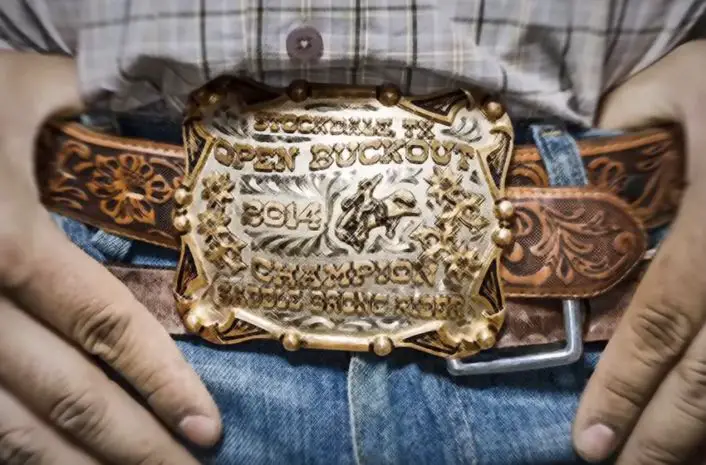
These buckles are ideal for casual, semi-formal, or special occasions where the accessory stands out.
Selecting the right plate or box-frame buckle involves considering both design and finish.
Matching the buckle’s tone with shoes or other accessories can create a cohesive, intentional outfit while allowing the hardware to express style personality.
Automatic and Ratchet Buckles
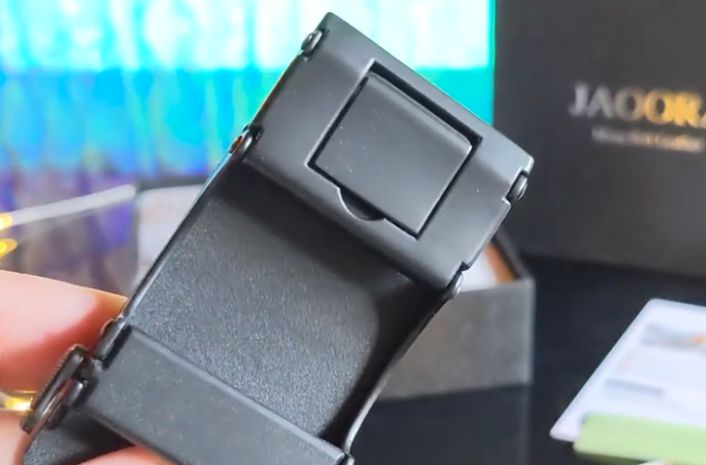
Automatic and ratchet buckles use a track mechanism instead of traditional holes, offering precise fit and adjustment.
These buckles are popular in modern belts, combining functionality and sleek design.
Ratchet belts suit both casual and formal wear, depending on the material and finish.
Polished metal ratchets enhance formal outfits, while matte or brushed finishes complement casual looks.
They are easy to adjust on the go, providing comfort throughout the day.
Investing in an automatic buckle belt adds convenience and versatility, giving you a well-fitted belt that aligns with your outfit and ensures a contemporary, refined appearance.
Men’s Belt Maintenance and Storage
Proper care and storage extend the life of your belts while keeping them looking polished.
Knowing how to maintain leather, fabric, and other materials ensures your accessories remain functional and stylish, giving you confidence in every outfit.
Caring for Leather Belts
Leather belts need gentle cleaning and conditioning to maintain durability and appearance.
Wipe with a soft, damp cloth to remove dust and dirt, and use a small amount of leather conditioner to nourish the material.
Avoid soaking leather, as excess moisture can cause damage. Store belts in a cool, dry place, either hanging or laid flat, to prevent creasing and maintain shape.
Regular care keeps leather belts supple, prolonging their life while ensuring they remain polished and appropriate for both casual and formal outfits.
Caring for Fabric Belts
Fabric belts require a different approach than leather. Check the care label for washing instructions; some are machine washable, while others need spot cleaning with mild detergent.
After cleaning, air-dry fabric belts to prevent shrinking or color fading.
Rolling or laying them flat during storage helps avoid wrinkles and bends.
Proper care keeps fabric belts looking neat and maintains flexibility, making them suitable for casual or active wear.
Regular maintenance ensures fabric belts remain reliable, visually appealing, and ready to complement your everyday or weekend outfits.
Monitoring Wear and Replacing Belts
Over time, belts show signs of wear such as fraying edges, fading, or stretched holes.
Recognizing these signs helps you decide when to retire an old belt.
Replacing worn belts keeps your wardrobe looking polished and current.
When selecting new belts, consider material, color, and style to align with your overall aesthetic and modern trends.
Regularly updating your collection ensures your accessories stay functional, stylish, and versatile, making every outfit appear intentional and refined without compromising comfort or coordination.
Common Mistakes Men Make with Belts
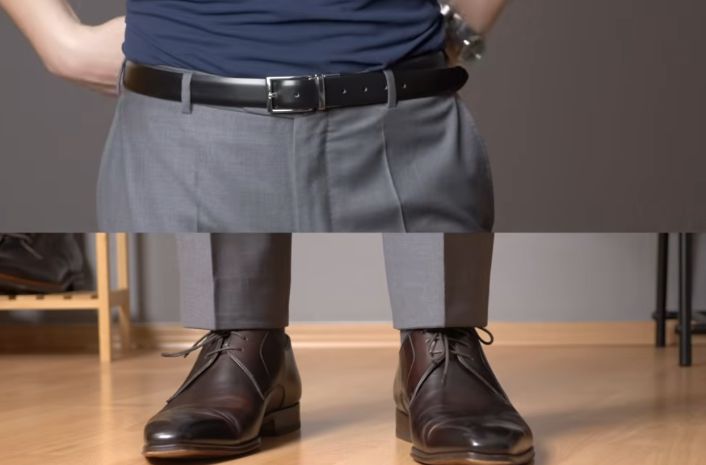
Belts complete an outfit, but common errors can undermine your style. Avoiding mismatched colors, worn-out materials, or overly flashy hardware helps you maintain a polished, intentional appearance in both casual and formal settings.
Mismatching Leather and Metal Tones
A frequent mistake is pairing the wrong leather and metal tones. Brown leather with a shiny silver buckle or black leather with gold hardware can create a distracting clash.
Coordinating leather color with buckle finish ensures cohesion. Gold, silver, or brushed metal should complement the belt material.
Paying attention to these details helps maintain a harmonious, intentional look.
Correct pairing ensures your belt supports the outfit rather than drawing negative attention or breaking overall balance.
Wearing Worn-Out Belts with Formal Outfits
Using old or distressed belts with polished outfits diminishes style. Leather that is cracked, faded, or frayed undermines sophistication.
While casual belts can show wear, formal attire requires clean, well-maintained belts.
Inspect your collection regularly and replace belts that have lost shape or integrity.
High-quality materials signal attention to detail and care for craftsmanship.
Choosing belts in good condition ensures your appearance remains sharp, professional, and refined, making a positive impression in business, social, or formal settings without detracting from your overall style.
Overly Flashy Buckles
Buckles with excessive embellishments, bold logos, or bright finishes can overpower formal outfits.
In professional or elegant settings, simple, understated buckles enhance the belt without stealing focus.
Classic styles in neutral tones provide balance, allowing the accessory to complement the ensemble.
Opting for minimalist hardware ensures the belt adds structure and polish rather than creating visual clutter.
By selecting appropriate buckles, you maintain sophistication and cohesion, letting your belt serve its purpose as a functional and stylish accent while avoiding common mistakes that can undermine your appearance.
Frequently Asked Questions
How many belts does a man need?
A man needs at least three belts: one black, one brown, and one casual. This covers most outfits from formal to weekend wear effortlessly.
Can you wear a belt and suspenders?
No, wearing a belt and suspenders together is considered a fashion faux pas. Both serve the same purpose, so choose one based on the outfit.
What belt should I wear with jeans?
Pair jeans with a casual belt, usually wider, with a rugged or matte buckle. Leather, canvas, or woven styles work well depending on the overall look.
Do brown shoes go with a black belt?
No, your belt should match your shoe color. Brown shoes pair best with a brown belt in a similar shade for a polished, coordinated appearance.
References
- A Man’s Guide to Belts
- The Guide to Men’s Belts: Styles, Sizes & Fit Tips
- How to Wear a Belt – Guide to Men’s Belts
Pyo Merez is a men’s lifestyle enthusiast and writer about the gentleman’s place and impact on society. Raised by a distinguished gentleman dad, he offers unique insights into how the mind of a gentleman works and how societal norms shape gentlemen’s identity and vice versa.
Through his insightful articles, Pyo taps into the depths of gentleman culture to provide perspectives on etiquette and manners in modern society.
